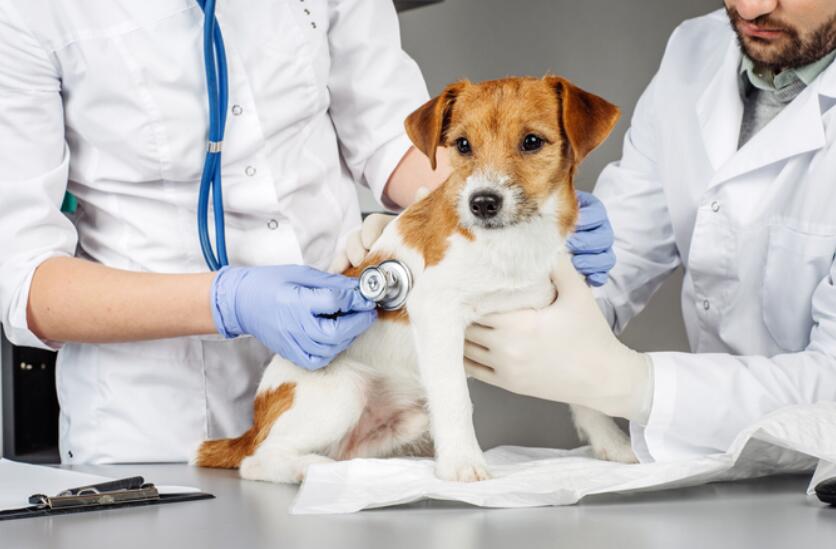 After an unusually wet winter, this spring brings much promise: amazing wildflowers, tall grass and lots of wall bugs. Not only are wall ticks total, they also spread a variety of diseases that can infect both humans and pets. Rocky Mountain spotted fever is a particularly nasty tick-borne disease that can affect both dogs and people.
After an unusually wet winter, this spring brings much promise: amazing wildflowers, tall grass and lots of wall bugs. Not only are wall ticks total, they also spread a variety of diseases that can infect both humans and pets. Rocky Mountain spotted fever is a particularly nasty tick-borne disease that can affect both dogs and people.
Rocky Mountain spotted fever (RMSF) is caused by the bacterium Rickettsia rickettsii. rMSF is transmitted by the bite of an infected tick. In North America, the types of wall ticks commonly associated with the disease are Dermacentor and d Rhipicephalus species. Common names include Rocky Mountain wood tick, American dog tick, and brown dog tick. these wall ticks are widely distributed east of the Rocky Mountains and are also seen along the Pacific coast.
Both dogs and humans can suffer from Rocky Mountain spotted fever. Although both species can develop the disease, transmission of the disease requires the bite of an infected tick, so dogs cannot directly infect humans and vice versa. Although cats may be positive for exposure to rickettsiae, they are not thought to develop the clinical signs of RMSF.
In dogs, there is no clear indication of the disease that specifically causes RMSF. Because the organism disrupts the walls of small blood vessels, clinical signs are seen throughout the body. Clinical signs may be vague and mimic other disease processes, which may delay the onset of diagnosis and treatment.
Common symptoms include. Abnormal bleeding
Abnormal bleeding
As the rickettsial organism develops in the body, vascular leakage and reduced clotting can lead to a variety of bleeding abnormalities. Owners may notice hematuria, which is blood in the urine. Dogs may also have nosebleeds, a condition known as rhinorrhea. The third most common finding related to bleeding is blood in the black stool or feces. Depending on the location of the GI bleeding, the pet’s feces may show signs of blood or a dark, tarry appearance. Anorexia nervosa
Anorexia nervosa
Dogs that are usually bulimics may begin to eat more slowly than usual or leave food in the bowl. In severe cases, the pet may stop eating altogether. Although uncommon, dogs with RMSF may also vomit after eating. Although this is a very common symptom associated with many other medical conditions, when used in combination with other symptoms, it may be an important clue if deciding whether to test for RMSF. blood of congestion (esp. in a blood-stained plaster case)
blood of congestion (esp. in a blood-stained plaster case)
One of the most obvious signs of RMSF is secondary to vascular leakage and impaired blood clotting. petechiae are small bruises, less than one-eighth of an inch. They are not isolated spots, but usually appear on large patches of skin. If the bleeding is large, larger bruises, called petechiae, may also occur.
These types of lesions are most likely to be noted on the mucous membranes. If the dog’s lips are lifted, petechiae are usually found on the gums. Owners may also notice petechiae around the genitals and eyes. Lower activity levels
Lower activity levels
Dogs with RMSF typically exhibit generalized discomfort. Reluctance to exercise and go for walks, lack of interest in interacting with the family and increased sleep duration are often reported. Fever
Fever
An elevated body temperature is one of the earliest signs in dogs infected with RMSF. tick bites are followed by a fever in affected dogs about four days later. Normal dogs have a body temperature between 100.5 and 102.5 degrees F. RMSF temperatures are usually between 102.5 and 104.9 degrees F. Joint pain
Joint pain
Joint pain is a well-documented symptom of tick transmission disease. Owners may mistakenly believe that their pet is not in pain because he or she is not vocalizing, but most dogs show pain through body language rather than by yelling. Many dogs just seem to move “slower” than usual, or are sensitive to contact around the affected joint. Reluctance to use stairs, difficulty getting on and off furniture, and prolonged standing on their backs are all associated with joint pain. swelling
swelling
Various parts of the body that cause swelling, which we call edema. Edema usually occurs in the extremities, lips, ears or scrotum. The affected area may appear “fluffy” or “floppy” due to the accumulation of excess fluid in the tissues. Unless the pet also shows bruising, the skin above usually looks normal. Pets are usually sensitive to touch in those areas that are swollen. Pets may also have enlarged lymph nodes. How is RMSF diagnosed and treated?
How is RMSF diagnosed and treated?
Your veterinarian may suspect RMSF based on your pet’s clinical signs and of exposure history, and may order a complete blood count and chemistry, in addition to specific tests to check for antibodies against rickettsiae.
RMSF is treated with the antibiotic doxycycline and supportive therapy is provided to control symptoms.
Unfortunately, there is no vaccine available to prevent Rocky Mountain spotted fever. The best prevention for RMSF and all tick-borne diseases is through tick prevention. Because clinical signs are so common, it is important to report tick bites to your veterinarian if your pet suddenly becomes ill. Early treatment is the key to a good outcome.

